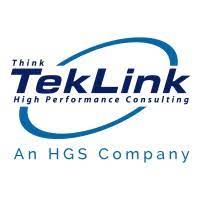SAP Trade Promotion Management
Filter By
Browse By
- SAP Analytics and AI
- SAP Application Development and Integration
- All SAP Application Development and Integration
- SAP ABAP
- SAP ABAP Development Tools
- SAP ABAP Test Cockpit
- SAP API Management
- SAP BAPI
- SAP Basis
- SAP BRF
- SAP Business Application Studio
- SAP CMS
- SAP Design Studio
- SAP Development Tools
- SAP DevOps
- SAP EAI
- SAP EDI
- SAP Extension Suite
- SAP Fiori
- SAP Fiori Elements
- SAP Integration Suite
- SAP Low Code Application Development
- SAP Low Code Automation
- SAP Netweaver
- SAP Release Management
- SAP UI5
- SAP Web Application Server
- SAP Web IDE
- SAP Business Process Management
- SAP Center of Excellence
- SAP CIO
- SAP Customer Experience
- SAP Data and Data Management
- All SAP Data and Data Management
- SAP BW
- SAP BW/4HANA
- SAP Crystal Reports
- SAP Data Archiving
- SAP Data Center
- SAP Data Governance
- SAP Data Integration
- SAP Data Migration
- SAP Data Quality
- SAP Data Services
- SAP Data Strategy
- SAP Data Visualization
- SAP Data Warehouse Cloud
- SAP DMS
- SAP Document Control
- SAP EIM
- SAP ETL
- SAP ETL Tools
- SAP HANA
- SAP HANA Administration
- SAP HANA Deployment Infrastructure
- SAP HANA Studio
- SAP Master Data
- SAP Master Data Governance
- SAP MDM
- SAP Enterprise Architect
- SAP Enterprise Asset Management
- SAP ERP
- SAP Finance
- All SAP Finance
- SAP Accounting
- SAP AR AP
- SAP Asset Accounting
- SAP Billing Systems
- SAP BPC
- SAP BRIM
- SAP Cash Management
- SAP Central Finance
- SAP Controlling
- SAP COPA
- SAP Cost Center Accounting
- SAP Currency Risk
- SAP e-invoicing
- SAP FICO
- SAP Finance Automation
- SAP Advanced Financial Closing
- SAP Financial Consolidation
- SAP Financial Planning
- SAP FX Risk
- SAP General Ledger
- SAP Global Tax Management
- SAP Hyperion
- SAP Order to Cash
- SAP Payment Processing
- SAP Profitability Analysis
- SAP Rebate Management
- SAP S/4HANA Finance
- SAP SWIFT Compliance
- SAP Treasury Management
- SAP Universal Journal
- SAP Governance Risk and Compliance
- SAP Human Capital Management
- SAP Intelligent Technologies
- SAP Platform and Technology
- All SAP Platform and Technology
- SAP Business Technology Platform
- SAP Cloud
- SAP Cloud Connector
- SAP Cloud Integration Platform
- SAP Cloud Migration
- SAP Cloud Platform
- SAP Cloud Providers
- SAP Cloud Strategy
- SAP Digital Signature
- SAP Container Platform
- SAP HANA Enterprise Cloud
- SAP Digital Asset Management
- SAP Smart Forms
- SAP HEC
- SAP Digital Integration Hub
- SAP Hyperscalers
- SAP Infrastructure
- SAP Messaging
- SAP Quality and Testing
- SAP Security
- SAP Spend Management
- SAP Supply Chain Management
- All SAP Supply Chain Management
- SAP APO
- SAP Asset Management
- SAP Business Network
- SAP Digital Manufacturing Cloud
- SAP Digital Twin
- SAP EWM
- SAP IBP
- SAP Inventory Management
- SAP Label Printing
- SAP Logistics
- SAP Manufacturing
- SAP Manufacturing Automation
- SAP MES
- SAP MII
- SAP MM
- SAP MRO
- SAP MRP
- SAP Order Management
- SAP Plant Maintenance
- SAP PLM
- SAP Production Planning
- SAP S&OP
- SAP SD
- SAP SPM
- SAP Supply Chain Planning
- SAP Track and Trace
- SAP Transportation Management
- SAP System Administration
What is Trade Promotion Management?
Trade Promotion Management (TPM) is focused on strategizing which promotional events have the greatest customer return on the invested marketing dollars. To determine this, companies must capture the expected promotional events, their costs, and the anticipated uplift.
Manufacturers and retailers require real-time visibility into their trade promotion landscape and adjust supply and demand parameters as business scenarios change. Through trade promotion, companies can expand their market share of specific products, better compete against competitors, and increase their retail partners.
With the use of technology, companies can optimize their trade promotion management by:
- Improving sales planning and budgeting
- Optimizing customer business planning
- Strengthening promotional planning
- Supporting execution and settlement
Key Considerations for SAPinsiders
What is Trade Promotion Management?
Trade Promotion Management (TPM) is focused on strategizing which promotional events have the greatest customer return on the invested marketing dollars. To determine this, companies must capture the expected promotional events, their costs, and the anticipated uplift.
Manufacturers and retailers require real-time visibility into their trade promotion landscape and adjust supply and demand parameters as business scenarios change. Through trade promotion, companies can expand their market share of specific products, better compete against competitors, and increase their retail partners.
With the use of technology, companies can optimize their trade promotion management by:
- Improving sales planning and budgeting
- Optimizing customer business planning
- Strengthening promotional planning
- Supporting execution and settlement
Key Considerations for SAPinsiders
- Improve effectiveness of trade dollars and supply chain by linking products in orders to specific promotions. According to Michael Debevec, President of Debevec Consulting, Inc., companies using TPM assign attributes to promotional spending that help them analyze actual results and compare the actuals to the original plans. “You assign each promotional event an identifier that you link to a new type of condition record, a campaign determination record,” he writes. “During order processing, you use the combination of customer, product, and date to determine if an active promotion is available. If one is available, the system stores the promotion identifier with the sales order line item.” Read the full article to learn more about the SAP TPM landscape and key system components.
- Avoid supplier stockouts by integrating trade promotion management with demand management planning. Planning a trade promotion with a retailer means ensuring product is available to meet expected demand. Not doing so leads to customer dissatisfaction and impacts to brand reputation and future sales. Manoj Ambardekar, an SAP subject matter expert with more than 20 years of IT and manufacturing experience, says to avoid stockouts, you need to determine the promotion uplift — the expected increase in demand beyond the baseline forecast. Doing so provides the total demand for a promotion. “TPM helps managers create a trade planning structure and gain visibility into trade promotions. Managers can identify the most profitable customers, fastest-moving product groups, and most effective types of promotions (e.g., end-of-aisle displays or front-page ads),” he writes. Read the full article to learn the configuration steps of a business scenario for a trade promotion.
606 results
-

 Premium
Premium
Change Data Basis Functionality Simplifies Product Classification in SAP Global Trade Services 10.1
Reading time: 18 mins
Learn how to set up a numbering scheme in SAP Global Trade Services 10.1 to facilitate the assignment of tariff and commodity codes for products sold by your organization. See how completing this process in version 10.1 is different from older versions of SAP Global Trade Services. Key Concept Product classification is the process of...…
-

 Premium
Premium
SAP BusinessObjects Planning and Consolidation: Read Dimension Members and Their Properties from an AppSet Using a BAdI
Reading time: 9 mins
Find out how to use a Business Add-In in SAP BusinessObjects Planning and Consolidation to read the dimension members and their properties within the same AppSet or any other AppSet. This enables you to create reports from data that you access in two different applications. Key Concept Business Add-Ins (BAdIs) furnish developers with the ability...…
-

- SAP IBP
 Premium
Premium
Promotion Planning and Management with SAP IBP
Reading time: 2 mins
Demand forecasting was highlighted as a key challenge in SAPinsider's recent research Supply Chain Planning in The Cloud. The quality of forecasts also plays a key role in inventory management, which has emerged as another key focus area for SAPinsiders. We will also publish a research report focused on this specific topic of inventory management…
-
-

- SAP GRC
 Premium
Premium
Mitigate Foreign Trade Payment Compliance Risk Using the Cockpit for Documentary Payments
Reading time: 33 mins
Learn how the Cockpit for Documentary Payments can be used to facilitate international customers’ payment compliance, thereby reducing the risk of doing foreign trade. Follow steps to implement the Documentary Payments component in SAP sales and distribution (SD). Key Concept The Cockpit for Documentary Payments provides automated financial documents to facilitate payment guarantee procedures required...…
-

SAP Data Maintenance Pricing + SAP Hybris
Reading time: 2 mins
SAP Data Maintenance for ERP by Vistex allows companies to quickly view, update, and analyze pricing, costs, and margins across all customer touchpoints while eliminating hours of manual processes. Integrated with SAP Hybris Commerce Suite, it provides robust tools for price administration, deal management, analytics, and automated maintenance to optimize pricing strategies.
-

 Premium
Premium
Improve Operational Effectiveness by Properly Loading and Monitoring SPL Data
Reading time: 24 mins
Review the operational considerations and the effective use of sanctioned party list functionality in SAP BusinessObjects Global Trade Services. See how to index business partner records effectively and manage your content and operational activities. Key Concept Screening business partners is controlled by three factors: record changes in the source system, content updates, and time. Record...…
-

 Premium
Premium
Automate Global Import/Export Processes Across Your Enterprise with SAP GTS
Reading time: 12 mins
For many companies, import/export trade processes are conducted manually. Automating these processes will reduce errors and reduce costly maintenance. SAP has introduced Global Trade Services (GTS), an application that runs on the NetWeaver platform, to help automate processes whether they run within or outside the R/3 enterprise structure. Get an inside look at GTS’s capabilities...…
-
-

 Premium
Premium
Set Up Preference Processing in SAP ECC and SAP Global Trade Services
Reading time: 14 mins
See how to set up and perform preference processing within your global customs practices through your supply chain in both SAP ERP Central Component and SAP GRC Global Trade Services. Preference processing allows you to capture and determine the duty preference, drawback, and allowance based on the country of origin and tariff for the product....…
-

 Premium
Premium
Easily Conduct Business Partner Checks in SAP BusinessObjects Global Trade Services
Reading time: 11 mins
Discover how to correctly configure the complex Sanctioned Party List and perform a business partner check using SAP BusinessObjects Global Trade Services. Key Concept By order of the US government, US individuals and companies are prohibited or restricted from exporting or providing services of any kind to any foreign party shown in the Sanctioned Party...…
-

- SAP ERP
 Premium
Premium
Unilever Goes Global with a Transformative SAP HANA Project
Reading time: 9 mins
SAP S/4HANA offers enterprises tremendous potential to go beyond performance and simplicity and deliver significant business value as part of an enterprise-wide digital transformation, but this approach must be understood, considered and incorporated into by SAP and Partners SAPinsider - 2006 (Volume 7), January (Issue 1) by SAP and Partners SAPinsider - 2006 (Volume 7),…
Become a Member
Unlimited access to thousands of resources for SAP-specific expertise that can only be found here.
Become a Partner
Access exclusive SAP insights, expert marketing strategies, and high-value services including research reports, webinars, and buyers' guides, all designed to boost your campaign ROI by up to 50% within the SAP ecosystem.
Upcoming Events
Related Vendors
Your request has been successfully sent


